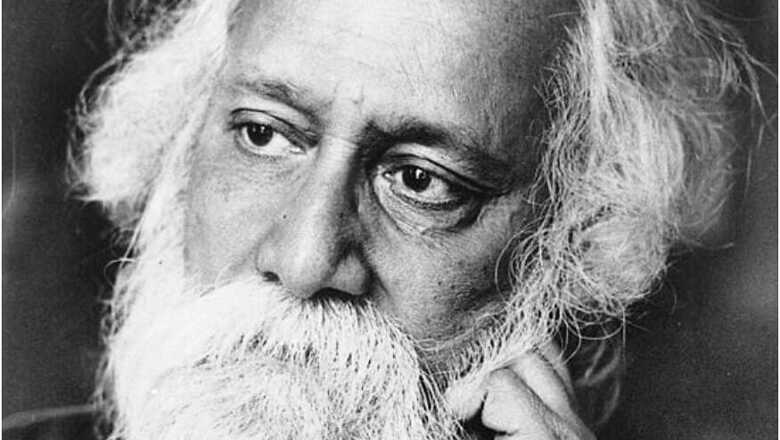
views
Observed on the last day of the Hindu lunar calendar month of Shravan, Rakshabandhan is steeped in Hindu mythology, folklore and folk practices. Rakshabandhan or Rakhi sees sisters tie a talisman, or amulet, called the rakhi, around the wrists of their brothers, symbolically protecting them and receiving a gift in return. The rite also symbolically represents that the brothers too share responsibility of their potential care. In 2019, Rakshabandhan falls on August 15.
While it started off as being a religious observance, dating back to mythical eras of gods and goddesses, one can take a look at the history of Bengal during the year 1905, when, in the wake of the first partition of the state, Rakshabandhan transcended from being a religious ceremony to that of a socialist movement, to mark a symbolic protest. And one person who was intricately involved with it was Nobel laureate Rabindranath Tagore.
The Rakshabandhan was perhaps the only festival, in India's struggle for freedom that was used to send a signal to the British Raj.
The incident happened at a time when the country was grappling under the control of the British Raj, who came up with a plan to divide the growing solidarity between the Hindus and Muslims — slowly but surely adopting a national identity in Bengal — against the Britishers. With an aim towards breaking the harmonious co-existence between the two, the then Viceroy of India, Lord Curzon ordered the partition of Bengal, based on religious grounds.
According to Curzon, the Muslim dominated region of Assam and Syhlet (now Bangladesh) were to be separated from the Hindu majority region of West Bengal, Bihar and Odisha.
The British government opined that the rationale behind move was purely administrative but the people believed that the real motive was their policy of divide and rule.
The order of partition was passed in August 1905 and came into effect on October 16 of the same year. Incidentally, the date of separation collided with the Purnima (full-moon) of Hindu calendar month of Shravan, the day celebrated as Rakshabandhan. In order to mark a symbolic protest, Rabindranath Tagore, decided to observe the festival in a manner that would send a strong message to the British Raj.
Tagore urged Hindus and Muslims to tie amulets or rakhi one each other's wrist to express solidarity with each other. Tagore's call of solidarity was adhered to by many members of both communities and Hindus and Muslims in Kolkata, Dhaka, Sylhet came out on the streets and tied the knot of unity with one another.
While in 1911, the partition was nullified, Tagore's vision of a unified Bengal was short-lived with the state being permanently divided in 1947 into the present state of West Bengal and the country of Bangladesh.
Follow News18 Lifestyle for more



















Comments
0 comment